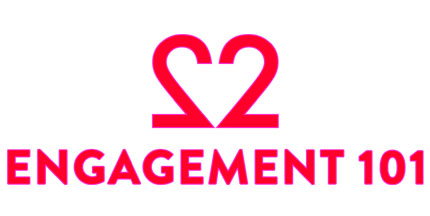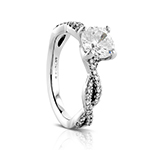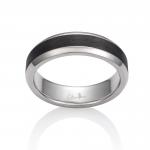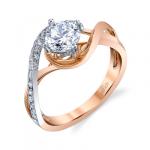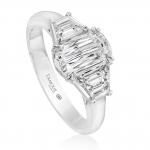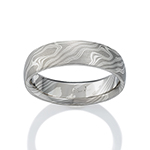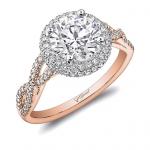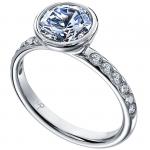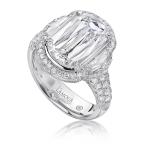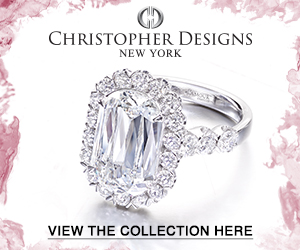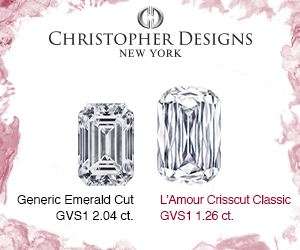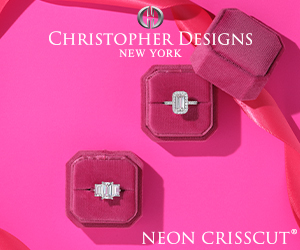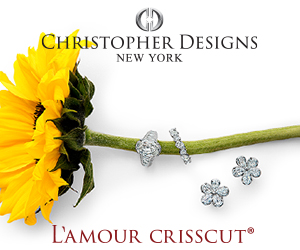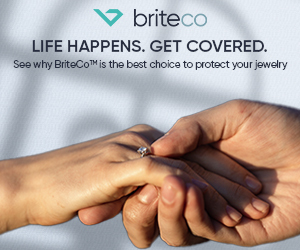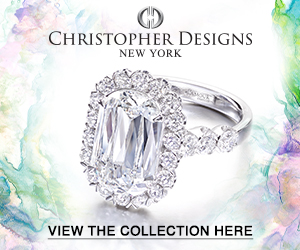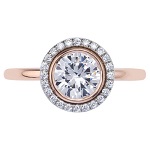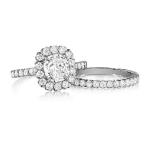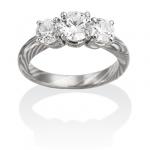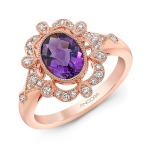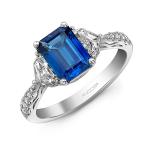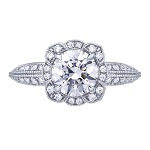Diamonds are associated with feminine desires and romantic daydreams. It may be difficult for a guy to develop a passion for them. However, the truth is they are as macho as any object can be.
- They are the hardest natural substance on earth.
- The carbon they’re made of may have come from outer space.
- They’re forged under unimaginable pressures deep in the Earth’s interior.
- They only surface when they explode out of a volcano.
- They are typically found in very hostile environments, including deep under arctic ice, in desert streambeds and in untamed jungles.
- Their history and exploration is teeming with intrigue and adventure.
The Basics: The 4 C’s
Before hitting the jewelry stores, make sure you do your homework on all things diamonds. This will assist you in asking the right questions and understanding the many qualities the salesperson will point out for each stone.
Diamonds are rated on four standards: cut, clarity, carat and color. These standards allow a buyer to assess the quality of a diamond. However, while carat weight is an objective measure, all of the other standards are subjective and dependent on the expertise of the person rating them. Any one diamond’s ratings may vary if assessed by several different people.
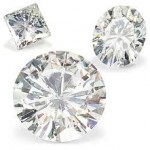
Cut
A diamond typically is found in nature as an octahedron-shaped crystal (imagine two four-sided pyramids with their bases connected). As a result of a diamond’s hardness, it’s very difficult to change its
shape.
Quality cutting is critical to a diamond’s value. A well-cut diamond captures and returns light through carefully designed, angled planes called facets. Cutting quality is rated on certificates as excellent, very good, good, fair or poor.
Diamonds come in a variety of shapes. The most common is the round brilliant, which features 58 facets and is generally regarded as the cut that displays a diamond to best effect.
Other popular cuts include the princess and the emerald. The princess has a square face that tapers down to a triangular shape. The emerald is a rectangular shape.
Other shapes include the oval, cushion, marquise and a variety of specialized designer cuts. When a gem cutter looks at a rough diamond, he will decide the best shape to highlight the diamond’s assets or hide its flaws. The more facets a cut has, the better suited it is to hide flaws.
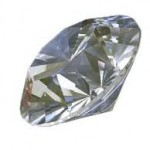 Clarity
Clarity
Gemstones were once graded based on their “water,” or apparent transparency. With modern equipment, stones can be closely examined under bright lights and high magnifications.
Stones with great clarity have two major benefits: They are more attractive due to their unobstructed
ability to capture light, and they are structurally sound. Flaws in diamonds are called inclusions (internal) and blemishes (external).
For instance, a diamond could be internally flawless having no inclusions, but it may have a blemish in the form of a scratch, chip or tiny pit on its surface. Or it could have a fabulous cut and polish that help to hide a small inclusion. Inclusions can be bubbles, tiny bits of coal or small fractures.
Like all natural gemstones, diamonds are not created under controlled laboratory conditions. Some see their tiny flaws as proof of their organic nature and a part of their charm. The Gemological Institute of America, considered the accepted authority on gems in the United States, created the accepted standard definitions for levels of clarity.
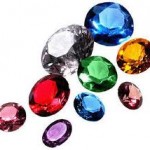
Color
A colorless diamond reflects light back in a pure rainbow without adding any other colors to dilute this effect. The GIA rates the colors of diamonds from D to Z. Diamonds rated D to G are considered essentially colorless. Diamonds rated H and I are considered near colorless. Diamonds rated J to Z have increasing yellow tones.
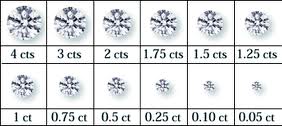
Carat Weight
One carat equals 0.007054 ounce. A one-carat diamond cut in a round shape would be about 6.5mm in diameter, or one-fourth of an inch.
The Bottom Line
All these numbers are great but first and foremost meet your diamond. Touch it, look at it and see if you’d rather have a perfect smaller stone or an imperfect larger stone. Then of course make sure to get the diamond appraised and that it comes with a legit certificate.






